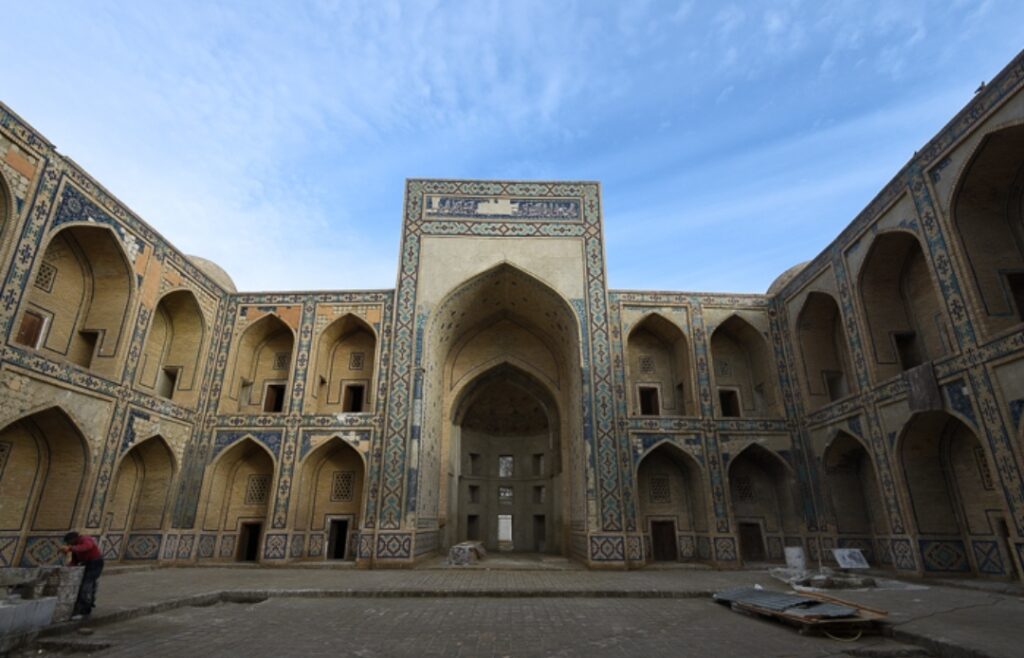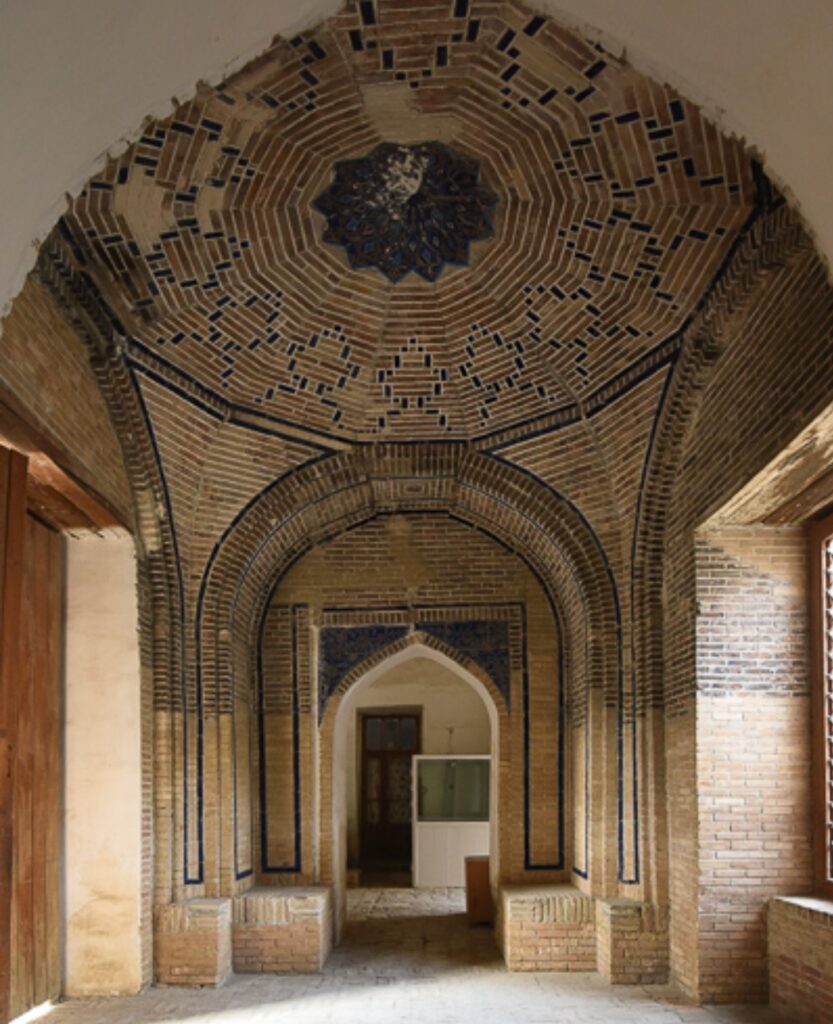Madrasa Ulugh Beg of Bukhara

The Madrasa Ulugh Beg is one of only a handful of Timurid-era buildings that survive in the Bukhara region, the others being the Chashma-ye Ayyub of western Bukhara and the madrasa of Ghijduvan. Of the three, the two madrasas were the work of Ulugh Beg, the Astronomer, Prince of Stars and grandson of Timur who ruled from 1447-49.
In Ulugh Beg’s era Bukhara was only of marginal importance, having lost much of its stature after the Mongol conquest in 1220.
Ulugh Beg is better known for his highly accurate star maps (which were made without the aid of a telescope), he was a strong patron of education.
Some activity had taken place under Ulugh Beg’s grandfather, with Timur ordering the reconstruction of the great mosque along the lines of the Bibi Khanum mosque of Samarkand, but such attention was scattered and half-hearted.

Ulugh Beg’s construction of a madrasa in 1420s—when he was still a prince—represented the first stirring’s of Bukhara’s cultural rebirth, as the madrasa served as a magnet to attract scholars and scientists from across the Muslim world, eager to advance both piety and knowledge.
The madrasa was designed by Mahmad Isfahani, an architect whose name survives on the portal. His surname, Isfahani, suggests he may have been a descendant of one of the master builders and artisans captured by Timur’s armies in Isfahan, Iran, and relocated to central Asia, where many remained.
The other two madrasas built by Ulugh Beg in Samarkand and Ghijduvan are similar in style, suggesting Isfahani may have had a hand in all three buildings.
Ulugh Beg, who ruled from 1447-49, was enlightened ruler who held a keen interest in scholarship and particularly astronomy. He was an astrologer as well as an astronomer, a champion of rationalism and also deeply pious.
Nearly all central Asian madrasas follow a similar layout. Their basic elements comprise a rectangular plan, a spacious open-air courtyard, one or two stories of hujras (cells) for students, and one or more monumental entrances marked by a pishtaq or iwan. The madrasa of Ulugh Beg also includes some pioneering features.

First, the main entrance leads to a small antechamber that branches off in three directions to provide access to the courtyard as well as a mosque and lecture hall on either side.
Second, a covered ambulatory runs around the interior of the upper level, providing a continuous passageway for the occupants.
It is the duty of every true Muslim, man and woman, to strive after knowledge – Ulugh Beg quoting the Hadith. Inscribed on his gate in Bukhara, 1417
Finally, the rear iwan is built with a deep protrusion that extends north from the building, forming a large shaded area which was likely used for outdoor classes.
Additional indoor classrooms, known as darskhana, are found at the northwest and northeast corners of the building.
The south facade, which faces the street, is decorated with a colorful array of majolica tiles including a “corded” band running around the inner frame of the pishtaq .
A callligraphic band on the iwan is inscribed with the admonition “Aspiration to knowledge is the duty of every Muslim man and woman,” in homage to Ulugh Beg’s great esteem for learning.


